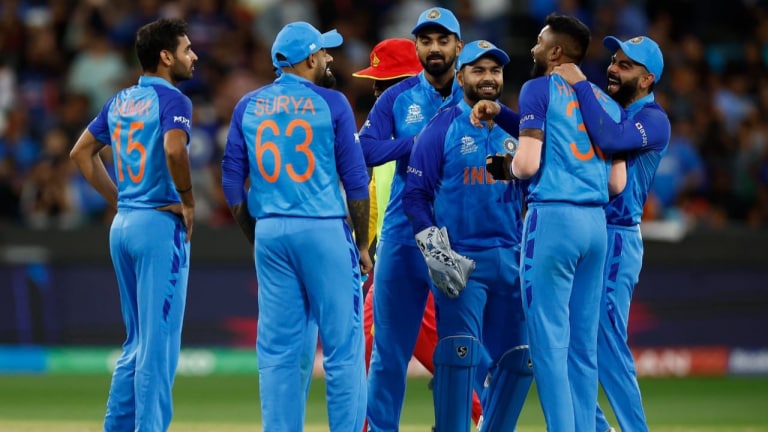Cricket
T20 World Cup: TV ad rates drop by 15% due to cricket fatigue this WC

With an estimated total viewership of 850 million across linear and digital broadcasts, the ICC Men’s T20 World Cup is an unmissable opportunity for advertisers. However, in terms of ad rates, the demand for the ICC Men’s T20 World Cup this year is not high as the previous year’s World Cup, potentially leading to reduced rates and affecting revenue, according to various media planners.
“TV rates are expected to drop by 15-20% due to cricket fatigue, historically low spending seasons, and budget constraints. The fatigue arises because the World Cup follows immediately after a long IPL event. Historically, advertisers spend less during June-July, a slower business period. Many advertisers who invested heavily in the IPL are unlikely to participate in the World Cup due to budget constraints, preferring to leverage the festive season for better ROI,” highlighted Vaibhav Choudhari, Vice President – West, Carat India.
Current discussions with vendors indicate ad rate packages are already lower than last year. Additionally, a possible drop in viewership due to match timings will impact sales. While usual sponsors like RMG apps and pan masala brands may participate, Choudhari added that selling the inventory without significantly slashing prices will be challenging.
The TV ad rates for an associate sponsorship range from Rs 6-7 lakhs for a 10-second exposure on linear TV, and the CPM for digital ranges between Rs 250 – 800 depending on the targeting cohort.
According to another media planner, the CTV inventory is sold out for linear and digital (handheld devices) in a tournament of this scale. There is usually some inventory that is still available even once the tournament begins, however, these close within the first few matches.
Out of the 55 matches in the tournament, there are 28 prime-time (8 PM IST) matches which would include all India matches along with the KO stage matches. Vendors are offering multiple lucrative packages to sell inventory for both prime-time and early-morning matches.
India matches and prime-time matches would be priced at 4x in comparison to those aired during the non-prime time, shared Andre Augustine, Chief of Staff, ITW Universe.
Matches involving India have at least 45-50% higher viewership than other team clashes, resulting in higher rates for these games.
That apart, the advertising inventory will be heavily utilised not only at live sports viewing, but across game-related content and scorecard tracking. Game-related content is also a huge opportunity for post-match analysis, pre-match discussions, and engaging fans with previous memorable moments on other platforms, noted Maanesh Vasudeo, CEO Media, LS Digital.
Disney+Hotstar, through its Self-Serve options and partnership with Google, has created an expansive landscape for advertisers and significantly expanded these opportunities.
While the overall demand, as per experts, for the event is not as high as the previous year’s World Cup, potentially leading to reduced rates and affecting revenue, there is a positive aspect: the increased number of matches.
This could result in achieving the revenue levels of the previous season of the T20 World Cup in India, noted Choudhari. Additionally, there is potential for an upside due to the global telecast of the event, which could attract more viewership from international fans. This increased viewership might lead to additional revenue from advertisers outside India.
From the T20 World Cup in 2022, Disney Star, via estimates, earned combined (TV and digital) ad revenue of Rs 700 crore.
With DD Sports also telecasting the matches, media planners said that viewership dispersion from DD feed is between 6-9% across the World Cup events and it is predominantly driven by tier 3 and 4 cities and rural areas, so the advertisers who want to connect with them would go for this option.
The trend so far has been a mix of consumer-centric brands, ranging from the FMCG sector to BFSI including Dream 11, Maruti, AMFI, Parle Products, BPCL, Haier, ICICI Bank, Jockey, KP Group (Kamala Pasand), Reliance Retail, Samsung India, Housing.com, Jaquar Group, Castrol, Kent RO, TVS Eurogrip, Macho Hint, McNroe, and Vimal across broadcasting formats.
Fixing advertisers’ dilemma
For advertisers, an optimal dispersion of TV and OTT platforms is crucial to maximise reach during the World Cup event. Significant viewership is expected on both media, so an either-or approach would result in lost opportunities given the event’s importance, said experts.
Match timings play a key role; early morning matches are likely to attract viewership on digital platforms, as audiences commuting for work or education might stream the games, noted Choudhari.
The non-prime matches also have less advertising clutter, offering advertisers an efficient way to capture attention, he added. Another major factor is the target audience. Digital streaming allows for precise targeting, enabling advertisers to focus their efforts within limited budgets.
All India-specific matches are scheduled for prime-time, which will draw mass audiences but also come with premium pricing. Therefore, he suggested, a combination of brand objectives, target audience, potential viewership shift and budget must be carefully weighed to determine the ideal mix of media platforms, timeband and matches. The clutter for India matches is expected to be higher than for other fixtures, making strategic placement even more critical.
While advertisers might have trouble finding budgets for the World Cup despite having a desire to be on it, there will be categories that will want to ride on the World Cup hype, be it on TV or Digital, especially those for whom monsoon is an important season; many believe the World Cup is the real thing, said Vinay Hedge, Chief Buying Officer, Madison Media.
“There is no confusion for advertisers, they are choosing to invest in the right avenue to speak directly to their target audience. For example, we have brands choosing either only linear TV or only digital or even a mix of the two based on their unique marketing objectives”, shared Augustine.


)






